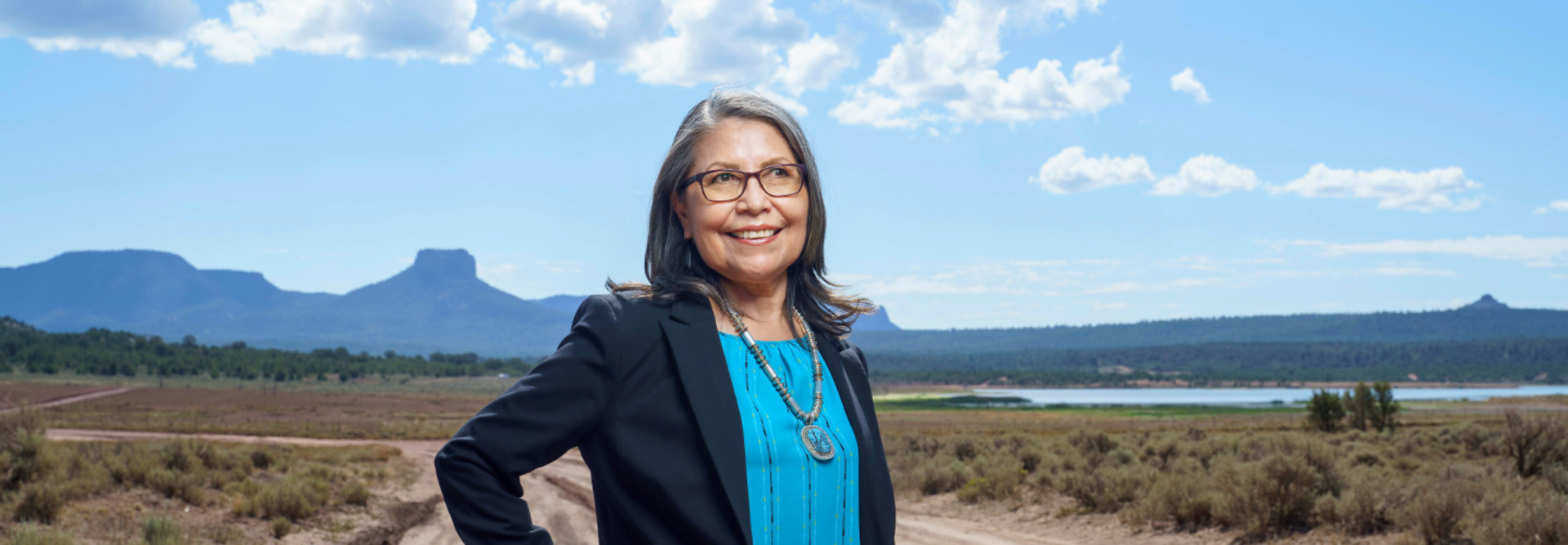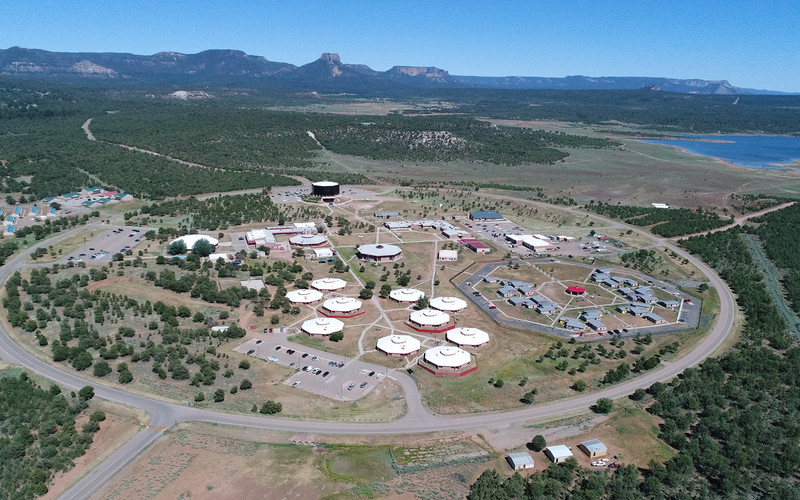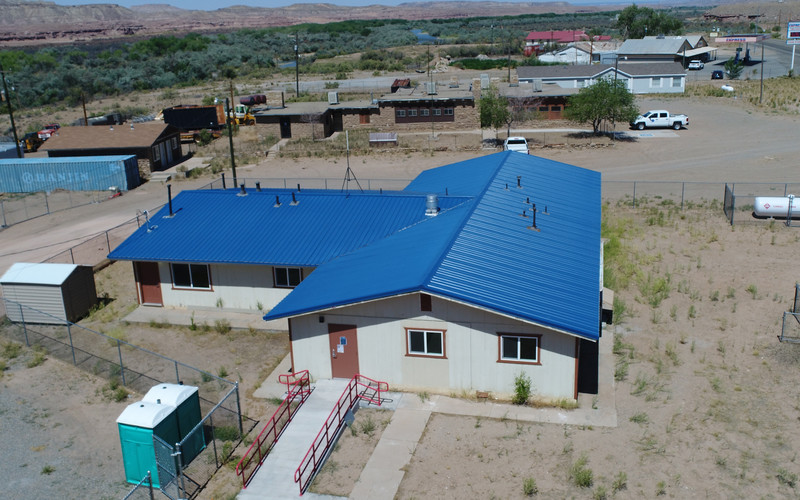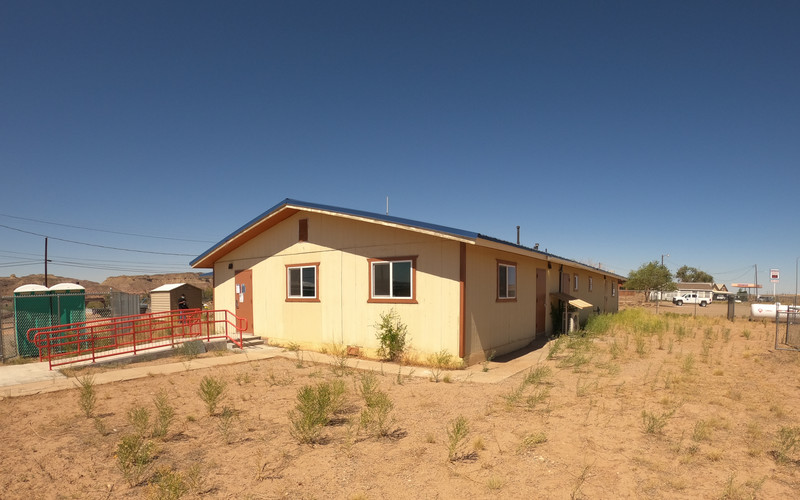At Diné College, administrators built out a series of “microcampuses” to support remote connectivity.
“It’s an established location within a remote community, with the typical infrastructure: utilities, an access road,” says IT Director Joy Thompson. “We outfit the location with a classroom, an office and study space. We also implement a local area network within the location, and extend cable drops and wireless access points so that students can come there and either study or do their homework or attend class.”
Finding the right vendor was pivotal to bringing this vision to life, Thompson says, and for the college that vendor was CDW•G. “We have a GSA account set up with CDW,” says Thompson, “and they always provide us with excellent pricing. They’re our go-to for equipment purchases.”
To connect the microcampuses, administrators brought in internet access from local service providers. “We have a Sophos XGS firewall, and we set up a point-to-point VPN so that staff at the location can connect to the enterprise applications that we have onsite at our main campus,” Thompson says. “We use Cisco equipment for the networking. We also have a server that’s a domain controller so that students can log in and authenticate.”
EXPLORE: Click the banner below for an exclusive Insider checklist of rural broadband considerations.
A Widespread Connectivity Problem for Remote Schools
Of course, the problem of rural connectivity extends beyond Navajo Nation.
“The majority of the institutions that we work with are on reservations, and they have some of the same needs that you see in other rural areas, especially with the lack of infrastructure,” says Cheryl Crazy Bull, president of the American Indian College Fund.
“There is a tremendous lack of broadband and even wireless access, which limits internet access,” she says. “There are actually some places where you can’t get wireless at all, and you can’t even use your phone. These are very economically impoverished environments. When people have to purchase internet access from their local phone provider, that may be a cost that they can’t afford.”
At Nebraska Indian Community College, President Michael Oltrogge has used E-rate funding to support a $500,000 connectivity solution.
“The college partnered with the K–12 schools because they already had better internet access than the rest of us,” he says. “First, we ensured that all K–12 students within the boundaries of the reservation had no-cost access to high-speed internet, and from there we could deliver free internet for my college students as well.”
To do that, the college created a wireless broadband network from the ground up. “I’ve got five base stations installed on the K–12 schools,” Oltrogge says. “We had to stick in the towers and the transmission equipment, and we had to purchase the end-user equipment, the 1-mile and the 5-to-7-mile equipment.”
To ensure students could make use of the network, the college also deployed approximately 100 HP Stream laptops and 350 Lenovo ThinkPads.
RELATED: 6 ways to close the broadband gap between rural and urban students.
Fiber and Hotspots for Remote Campuses
At Salish Kootenai College, a Native American school in Montana, President Sandra Boham also needed to address digital access amid the pandemic needs.
“It was pretty rough in the beginning. A lot of people had children at home, and when they were doing their work from home, they overloaded their internet connections,” Boham says. “We’re also up against a mountain, and that creates a huge problem for connectivity.”
In response, she says, “we have been increasing the fiber connectivity on our campus to our dorms and buildings. We’ve also given hotspots to students and put up hotspots in places where you can drive into a parking lot with a computer and do your work.”
The school also deployed laptops, relying primarily on Dell and Apple equipment.
Unique Bandwidth Challenges for Tribal Colleges
Bringing connectivity to remote settings poses special challenges. At Diné College, geography influenced the effort.
“We have locations that are close to students, but not so close to infrastructure,” Thompson says. “For instance, the location that we have in Aneth, Utah, is connected via fiber. In our New Mexico location, we had to work with four different service providers to see who could efficiently get us 100 megabits.”
The college eventually chose a wireless company that could deliver a cellular system. “We have to help the providers to engineer the path to those locations, identifying what services are nearby or just understanding the hops that the provider needs to make in order to provide services,” Thompson says.
From the students’ perspective, the outcome justifies the effort. “What they see in the microcampus is a stable location where they can securely connect to classes and do whatever coursework they need to complete,” she says.
Now, students can drive one hour to a microcampus instead of two hours to a regular campus — a major improvement for parents and for students who work.
Advocates for tribal colleges say their work depends on solutions like these.
“Part of the mission of these institutions is restorative, to bring back to the community the practices that are inherently related to the different tribal identities,” says Crazy Bull at the American Indian College Fund.
Food sovereignty practices and Native arts, such as beadwork, are typically taught in person. It’s possible to teach such things remotely, she says, “but you need a robust infrastructure to support that.”
Steven St. John
















